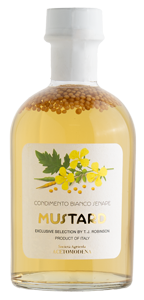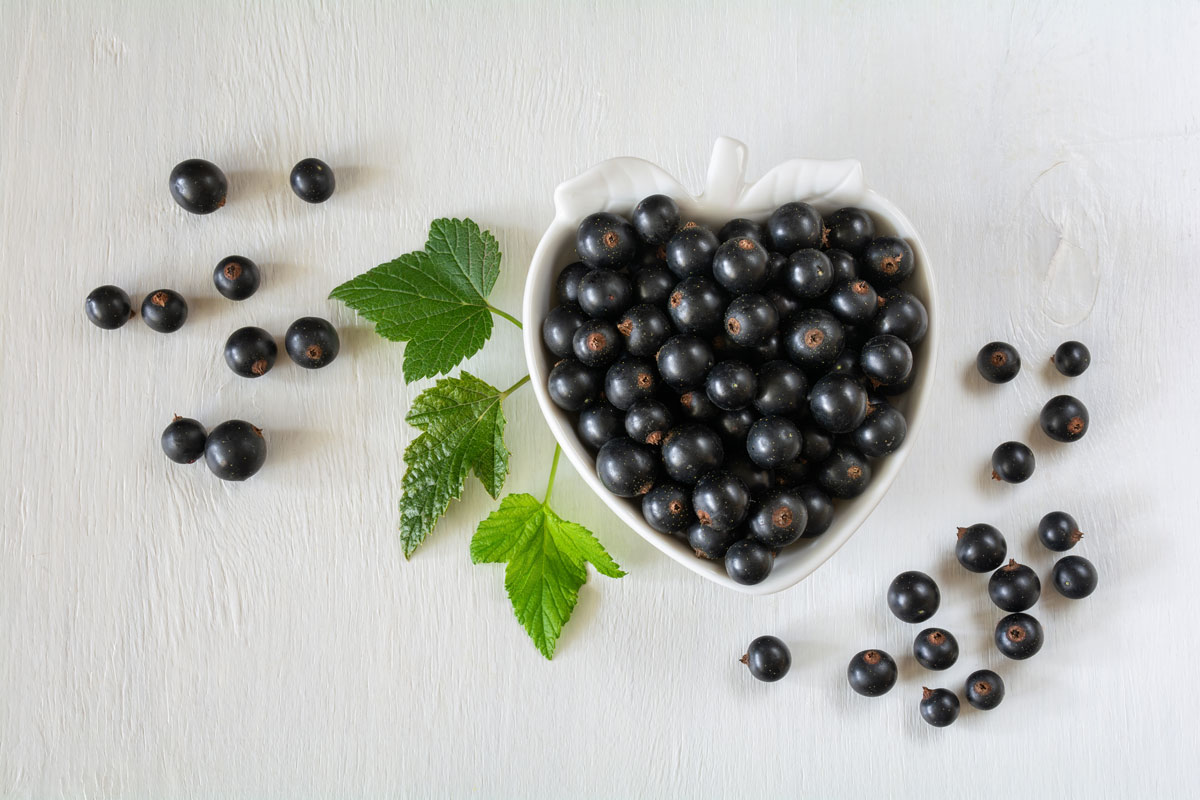Potato Frittata Recipe, Spotlight on Condimento Bianco Senape and Blackcurrants, Steaming Potatoes, and A Surprising Benefit of Exercise for Women
Autumn is a wonderful time to get together with family and friends, and what better way than over brunch? If you’re looking for a simple yet satisfying dish, my potato frittata fits the bill. It features Condimento Bianco Senape, a unique vinegar in my brand new collection of artisanal vinegars from the T. J. Robinson Curated Culinary Selections. Sweet, fragrant, and with a hint of mustard, it’s crafted in the style of a fine Italian balsamic (read below to learn why there’s actually no such thing as “white balsamic”). You’ve never tasted anything like it before—get ready to fall in love!
Also in this issue…I’m sharing fascinating research on blackcurrants, a powerful member of the berry family that might hold the answer to protecting women’s bones in midlife and beyond. Keep reading and you’ll also find out about a surprising benefit of exercise.
Potato Frittata
 Potato Frittata
Potato FrittataElegant enough for a brunch party, this egg-and-potato dish is also easy enough for a casual weekend breakfast. The potatoes can be steamed a day or two in advance.
Ingredients
- 1 pound red potatoes
- 8 eggs
- 2 ounces freshly grated Parmigiano-Reggiano cheese
- 2 tablespoons milk
- 2 teaspoons freshly ground black pepper
- Coarse sea salt
- 3 tablespoons extra virgin olive oil, plus more for drizzling
- 1 large leek, twiced rinsed, trimmed of the tough, dark green ends, and sliced into 1/4-inch discs
- 2 tablespoons Condimento Bianco Senape, plus more for drizzling
Directions
Step 1
Cut the potatoes into 1/4-inch slices. Steam them on a steamer rack over simmering water until tender, about 25 minutes.
Step 2
In a bowl, whisk the eggs until no whites show, then whisk in the cheese, milk, black pepper, and 1 teaspoon salt until well combined.
Step 3
Heat a 14-inch skillet over medium heat. When hot, add the olive oil and the leeks. Sprinkle with a big pinch of salt and sauté until the leeks soften and turn light brown, about 10 minutes. Layer on the potato slices, overlapping them a bit. Pour on the egg mixture. Cover the pan and cook without disturbing over medium heat until the eggs firm up, about 8 minutes. Drizzle on the vinegar, cover the pan again, and remove from heat. Let stand for 10 minutes before slicing into wedges. Drizzle each portion with more olive oil and vinegar.
Yields 4 servings

Healthy Ingredient Spotlight
Condimento Bianco Senape

I want to set the record straight—“white balsamic” is not a recognized type of vinegar in Italy. That’s because, by its very nature, balsamic vinegar must be made solely with grape must (grape juice made from all parts of the grapes) that naturally darkens to its signature purple-brown color. That being said, my new Condimento Bianco Senape, or White Condiment with Mustard, is reminiscent of a fine balsamic because it’s crafted in the perfect ratio of two parts white cooked grape must to one part white wine vinegar by the amazing vinegar producers known for their balsamic vinegars, Società Agricola Acetomodena in Modena, Italy. Both the grape must and wine vinegar are made solely from Acemodena’s own Trebbiano grapes, which give it its unique light color, and not their Lambrusco ones, which give traditional balsamic its deep color.
The idea for creating a complex, mustard-seed infused white wine vinegar in the sweet style of balsamic came from Patrizia Vecchi, the wife of Acetomodena owner Paolo Vecchi. She was inspired by the ancient Roman cooking technique of using a white vinegar along with honey and mustard to get a delicious crust on spit-roasted pork. The white mustard seeds, which are entirely edible, add a subtle layer of flavor to my Condimento Bianco Senape that would be lost in a traditional balsamic.
You’ll use this mustard vinegar to effortlessly create a rich and silky vinaigrette just by whisking in fresh-pressed olive oil and a bit of salt and pepper. I love its sweetness yet will also blend it with other vinegars when I want a bit more tartness. Use it as a marinade for poultry, pork, and fish. Drizzle it on steak and burgers, gourmet sandwiches with prosciutto and other meats, bruschetta with tomatoes, fresh salads like rocket with pine nuts and a drizzle of honey, and my eggless Caesar salad which along with the potato frittata are just two of the many recipes included in the Vinegar Report that comes with the collection.

Quick Kitchen Nugget
Steaming Potatoes
Steaming potatoes keeps them from falling apart and preserves more of their nutrients than boiling. Simply scrub and slice or cube your potatoes and arrange them in a steamer basket set over two inches of simmering water in a stockpot. You can load the basket with two layers of potatoes, but try to keep some space between the pieces for the steam to get through. The potatoes are done when the tip of a knife easily pierces the flesh; start checking after 25 minutes.

For Your Best Health
Blackcurrants for Better Bones?
Research done at the University of Connecticut (UConn) has identified blackcurrants, a tart berry known in French foods and liqueurs as cassis, as a potential way of countering the bone density loss experienced by women in the years surrounding menopause.
For many years, Ock Chun, PhD, MPH, professor of nutritional sciences in UConn’s College of Agriculture, Health and Natural Resources (CAHNR), has been investigating the berry’s potential to ameliorate a host of conditions including postmenopausal bone loss and osteoporosis. One of her previous studies showed that in mice, blackcurrant supplements helped prevent bone density loss postmenopause, and that the best time to start taking these supplements is in the transition between pre- and postmenopause, before bone loss has significantly progressed. With these findings in hand, Chun and her team wanted to see whether the benefits would translate to people. The new study, published in the Journal of Nutritional Biochemistry, found that the supplements prevented the loss of, and in some cases even increased, whole-body bone mineral density in women.

The study involved 40 perimenopausal and early postmenopausal participants between the ages of 45 and 60. They were randomly assigned to take either one or two capsules of blackcurrant powder (392 milligrams per capsule) or a placebo daily for six months. The researchers found that the supplements prevented the loss of whole-body bone mineral density and that the group of participants who took two capsules a day actually showed overall increases in bone mineral density at the end of the six-month trial period.
The researchers looked at changes to the gut microbiome and immune system, which interact to play a key role in bone metabolism. They found that the blackcurrant supplements decreased levels of proteins called interleukin-1 beta and RANKL. Interleukin-1 beta stimulates the expression of RANKL, which causes bone resorption and thus a decrease in bone density. “The reduction in RANKL is important because that can cause shifts toward excessive bone resorption, so we’d want to see a decrease in that,” said graduate student Briana Nosal, first author of the paper.
Taking the supplements also increased Ruminococcus 2, bacteria found in the gut microbiome that help degrade polysaccharides and fibers. This is a key function that transforms the foods we eat into energy. This led the researchers to infer that it could be one of the bacteria driving the protective effects blackcurrant has on bones. “It’s all related, and there’s a lot of research showing the gut can regulate various systems in the body,” Nosal said.
The researchers identified a total of four proteins that had increased expression in the group of participants who took two daily supplement capsules. These could serve as potential biomarkers for the changes in bone density that they observed and potentially allow researchers or medical professionals to quickly and easily assess whether the blackcurrant supplementation is benefiting bone density.
This study is especially important for perimenopausal and early postmenopausal women who have or are at risk of developing osteoporosis. While medications for osteoporosis do exist, compliance is low due because of side effects. If a blackcurrant supplement can improve bone density without the same side effects, it could prove to be an effective alternative.
As the research team continues to study the relationship between blackcurrant and its benefits to the body, they’ll try to better understand why exactly they’re seeing these results and “how all our findings connect to each other,” Nosal said. “Conducting that multifaceted research will really paint the picture of how everything works, the different mechanisms, and what we can do for next steps.”

Fitness Flash
A surprising Benefit of Exercise for Women
Recent research led by Donald S. Wright, MD, MHS, of the Department of Emergency Medicine at Yale School of Medicine and published in the American Journal of Preventive Medicine found that sticking with an exercise program is linked to older women staying out of the hospital.
This retrospective study evaluated 718 older adults with a mean age of 69.5; three-quarters were women. The researchers compared the outcomes of those who participated in a structured, individualized exercise training program at a privately owned gym in their community for at least three months (411 participants) to the outcomes of those who did not. The structured program consisted of guided sessions of cardiovascular, strength, and flexibility training monitored by exercise physiologists. Participants completed a baseline physical assessment and quarterly reassessments of physical performance including measuring vital signs, strength (bicep curl or grip strength), mobility (as measured by the ability to easily go from sitting to standing), balancing on one leg, and aerobic capacity. These data were paired with regional hospital data and a national mortality database. Participants were followed for over two years.
When the researchers compared outcomes of older adults who participated in the exercise program with outcomes of those who did not, they found that the risk for all-cause hospitalization was 46 percent lower among the women in the exercise program. Surprisingly, this benefit was not seen among the men.
The researchers pointed out that the study doesn’t establish cause and effect between exercise and not needing healthcare, just a link, albeit a positive one for women. It’s also not known whether the people who dropped out of the structured exercise program exercised independently, potentially narrowing the observed differences between the groups. They also warned that participants may not be fully representative of the broader US population because they were all from one area of the country and had all been motivated to sign up for the gym program on their own.
Get More Recipes In Your Inbox!